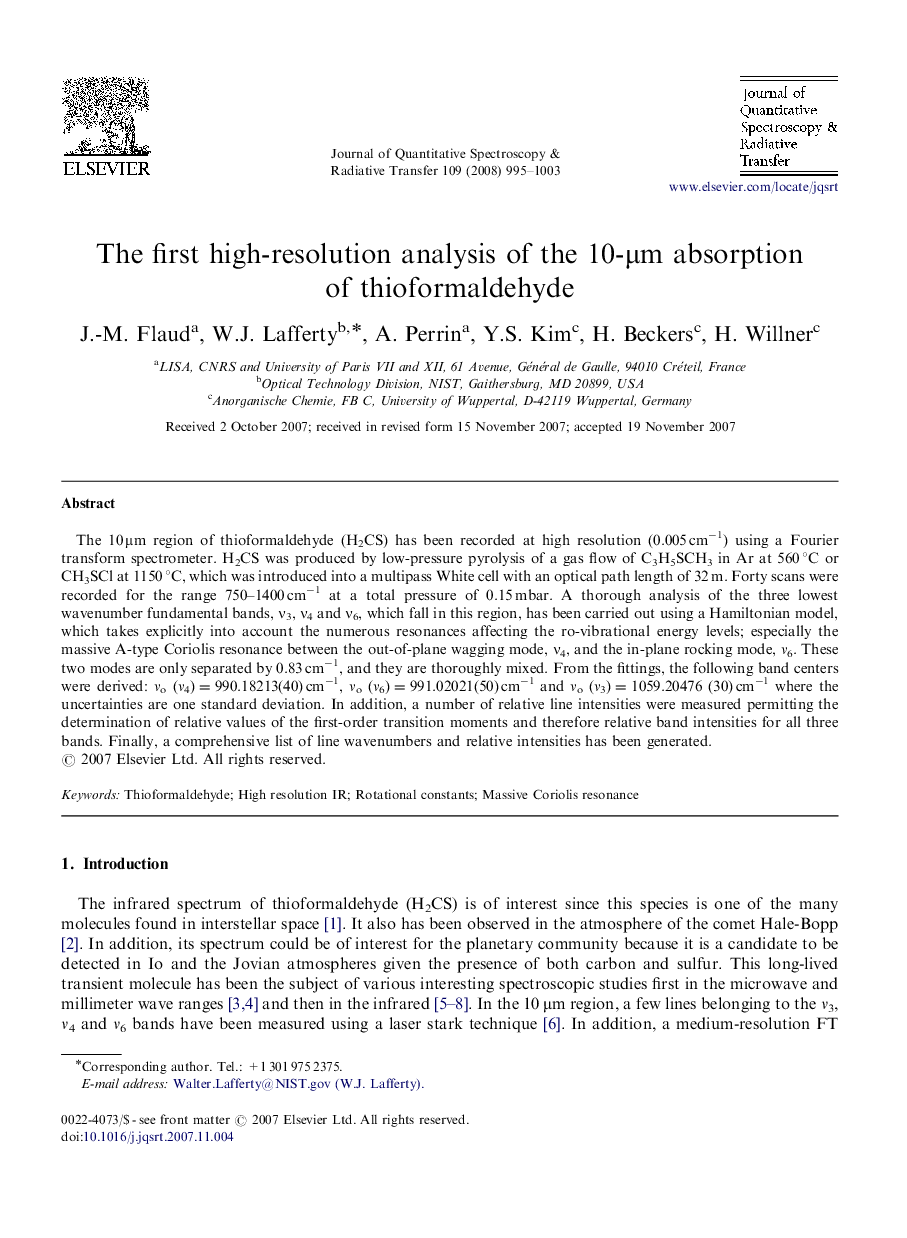| Article ID | Journal | Published Year | Pages | File Type |
|---|---|---|---|---|
| 5430553 | Journal of Quantitative Spectroscopy and Radiative Transfer | 2008 | 9 Pages |
The 10 μm region of thioformaldehyde (H2CS) has been recorded at high resolution (0.005 cmâ1) using a Fourier transform spectrometer. H2CS was produced by low-pressure pyrolysis of a gas flow of C3H5SCH3 in Ar at 560 °C or CH3SCl at 1150 °C, which was introduced into a multipass White cell with an optical path length of 32 m. Forty scans were recorded for the range 750-1400 cmâ1 at a total pressure of 0.15 mbar. A thorough analysis of the three lowest wavenumber fundamental bands, ν3, ν4 and ν6, which fall in this region, has been carried out using a Hamiltonian model, which takes explicitly into account the numerous resonances affecting the ro-vibrational energy levels; especially the massive A-type Coriolis resonance between the out-of-plane wagging mode, ν4, and the in-plane rocking mode, ν6. These two modes are only separated by 0.83 cmâ1, and they are thoroughly mixed. From the fittings, the following band centers were derived: νo (ν4)=990.18213(40) cmâ1, νo (ν6)=991.02021(50) cmâ1 and νo (ν3)=1059.20476 (30) cmâ1 where the uncertainties are one standard deviation. In addition, a number of relative line intensities were measured permitting the determination of relative values of the first-order transition moments and therefore relative band intensities for all three bands. Finally, a comprehensive list of line wavenumbers and relative intensities has been generated.
